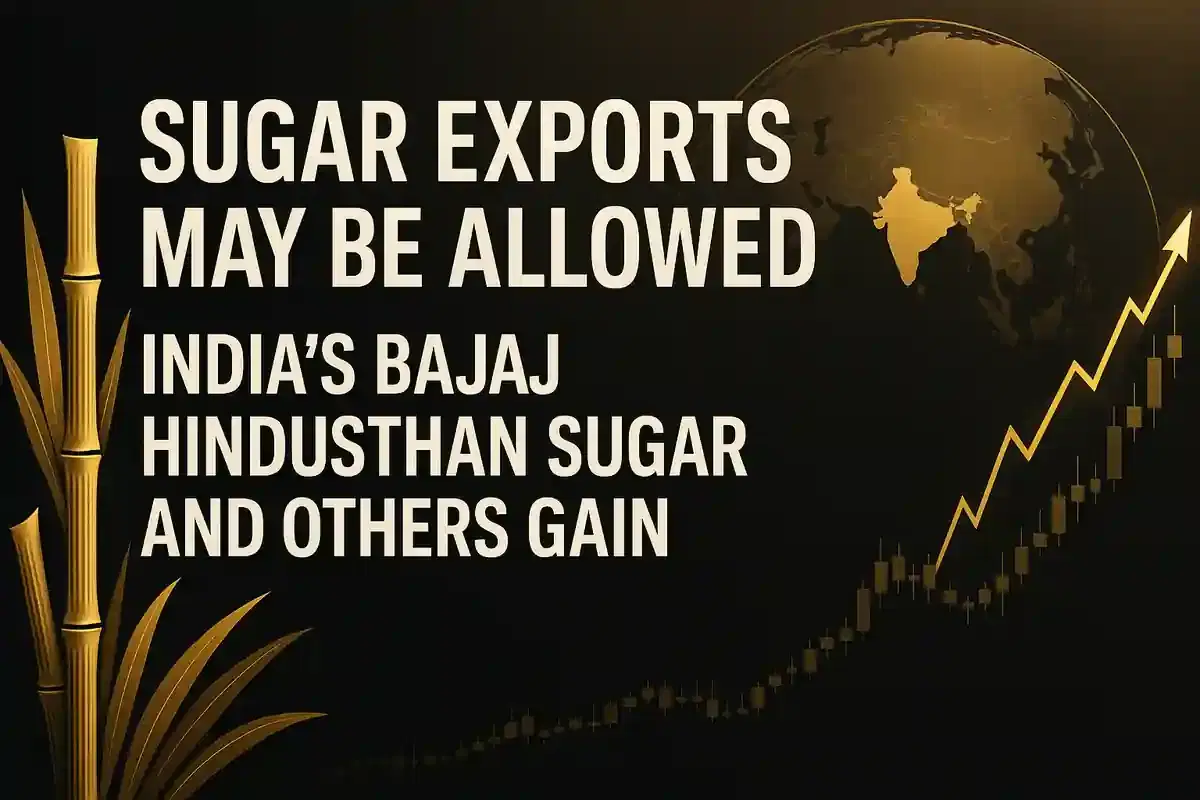Sugar Stocks Rally as India Eyes Exports Amid Surplus and Increased Ethanol Targets
Commodities
|
29th October 2025, 9:28 AM

▶
Stocks Mentioned :
Short Description :
Detailed Coverage :
Shares of several Indian sugar companies, including Bajaj Hindusthan Sugar Limited, Shree Renuka Sugars Limited, Triveni Engineering & Industries Limited, E.I.D.- Parry (India) Limited, Dwarikesh Sugar Industries Limited, and Dhampur Sugar Mills Limited, surged by up to 5% on Wednesday. This rally was fueled by positive developments concerning potential government policies for the sector.
The Indian Sugar Mills Association (ISMA) has reportedly requested orders for 1.5 billion liters of ethanol to be produced from cane feedstock in the upcoming marketing cycle, signaling strong industry ambition for increased ethanol output. Simultaneously, the central government is evaluating the possibility of allowing sugar exports for the 2025-26 marketing year. This consideration arises from the expectation of a significant surplus in sugar production.
Union Food Secretary Sanjeev Chopra explained that India's sugar mills diverted only 3.4 million tonnes of sugar for ethanol production in the 2024-25 period, falling short of the estimated 4.5 million tonnes. This lower diversion, combined with an estimated production of around 34 million tonnes against a domestic demand of 28.5 million tonnes, is projected to result in substantial opening stocks for the current marketing year (October 2025 to September 2026).
Chopra confirmed the existence of a surplus and stated that the government is "considering allowing exports." He indicated that a decision could be announced soon, possibly after a committee of ministers convenes next week, aiming to provide the industry with an extended planning horizon for exports. He also noted that while international prices for refined sugar are currently unfavorable, export parity might be achievable for raw sugar.
In a related policy move last month, the government removed restrictions on ethanol production volumes from sugarcane juice, syrup, and molasses for 2025-26. This policy aims to strike a balance between ensuring sufficient sugar supplies for domestic consumption and advancing the national ethanol blending program.
Impact: These developments are poised to benefit sugar companies by potentially increasing their revenue streams through exports and higher domestic ethanol demand. This also aligns with India's broader objectives for biofuel production and energy security. The policy shift could help stabilize sugar prices and enhance farmer incomes by creating more avenues for sugarcane utilization. Impact rating: 8/10
Difficult terms: Ethanol: A type of alcohol produced from the fermentation of sugars, widely used as a biofuel when blended with petrol. Cane Feedstock: Sugarcane utilized as the primary raw material for the production of sugar and ethanol. Marketing Year: A defined 12-month period, typically aligning with an agricultural production cycle, used for accounting and trade. For Indian sugar, it runs from October to September. Diversion for Ethanol: The process where sugar or its by-products are used to manufacture ethanol instead of for direct consumption or export as sugar. Surplus Stock: An excess quantity of a commodity that exceeds immediate needs or demand. Export Parity: The price point at which a commodity can be profitably exported, taking into account both domestic production costs and international market rates. Biofuel: Fuel derived from organic matter, such as plants. Ethanol Blending: The practice of mixing ethanol with petrol to create a cleaner-burning fuel and reduce reliance on fossil fuels. Molasses: A thick, dark syrup that is a by-product of sugar refining from sugarcane or sugar beets.